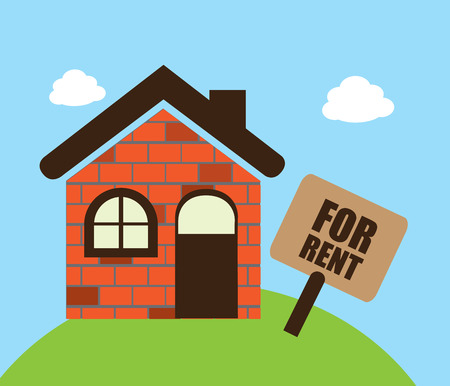Frugal Living in a High-Cost World
Picture this: Emily, a 28-year-old software engineer, moved to Austin chasing tech dreams and sunshine. She thought she was prepared—student loans paid off, no car payment, and a reputation among friends as the “queen of couponing.” But nothing could have prepared her for the sticker shock of finding a place to live. Whether scanning Craigslist for rentals or considering open houses with her realtor, every monthly number made her question if extreme frugality was enough anymore. In today’s American cities, rent and home prices have soared faster than most paychecks can keep up. For extreme frugalists—those who squeeze every penny and thrive on financial discipline—the modern housing market feels like an obstacle course built by billionaires. Each decision, whether to rent or buy, comes loaded with tradeoffs that challenge even the savviest saver’s resolve. As Emily sits at her kitchen table with a spreadsheet open and a reusable coffee mug in hand, she wonders: Is there still room for frugal living in America’s high-cost world? Or has the dream of affordable housing slipped further out of reach?
2. Decoding the True Cost: Renting vs. Owning
When you’re an extreme frugalist, every dollar counts—so understanding the real costs of renting versus owning a home is crucial. Let’s break down each expense, including hidden costs and opportunity costs, to help you make a decision that aligns with your ultra-budget lifestyle.
Breaking Down the Expenses
| Cost Category | Renting | Owning |
|---|---|---|
| Monthly Payment | Rent (fixed for lease term) | Mortgage (principal + interest) |
| Upfront Costs | Security deposit, first/last month rent, application fees | Down payment (typically 5-20%), closing costs, inspection fees |
| Maintenance/Repairs | Usually covered by landlord | Homeowner responsibility (can be unpredictable) |
| Property Taxes & Insurance | N/A (sometimes renters insurance required) | Annual property taxes, homeowners insurance required |
| Utilities | Sometimes partially included (varies by lease) | Always full responsibility of owner |
| Opportunity Cost* | No capital tied up in property; potential to invest savings elsewhere | Tied-up cash in down payment and equity; possible appreciation but less liquid |
| Flexibility/Moving Costs | Easier, cheaper to relocate at end of lease or with notice fees | Selling/buying process costly and time-consuming; agent fees, moving expenses higher |
| Hidden Costs | Rent increases, pet fees, renter’s insurance premiums, non-refundable deposits | HOA fees, unexpected repairs (roof, HVAC), rising property taxes, renovations for resale value |
*Opportunity cost refers to what you could earn if your money wasn’t tied up in a house—like investing instead of making a big down payment.
The Extreme Frugalist’s Lens: What Really Matters?
If you’re laser-focused on maximizing savings and flexibility, renting can often make more sense due to its low upfront costs and minimal maintenance headaches. You can invest the money you’d use for a down payment and let it grow elsewhere. However, owning may pay off if you’re planning to stay put long-term in an affordable area and are handy enough to tackle DIY repairs. Just remember: the true cost of ownership goes far beyond the mortgage. From busted water heaters to rising property taxes, surprises lurk around every corner—so build those into your ultra-frugal budget before signing anything!

3. Finding Flexibility: Lifestyle and Freedom
For the extreme frugalist, every dollar counts—and so does every opportunity. When weighing renting against owning, it’s not just about the money. It’s about how each choice shapes your ability to pivot, adapt, and chase new horizons. Renting is like keeping your suitcase half-packed: you’re ready to move at a moment’s notice, whether it’s for a dream job in Austin or a six-month gig in Seattle. This kind of mobility can be priceless if you thrive on flexibility or love the thrill of finding the next big deal on housing.
On the flip side, owning a home is often seen as the ultimate symbol of stability—a fortress against rising rents and unexpected moves. For some, this security is non-negotiable. You know where you’ll spend holidays, plant your backyard tomatoes, and maybe even raise a family. But for the creative hustler, that same stability can sometimes feel like being locked into a long-term contract with no easy out. Selling a home isn’t as simple as giving 30 days’ notice; it requires time, money, and patience.
The freedom to pursue opportunities—be it remote work across the country or chasing housing deals in up-and-coming neighborhoods—is a major selling point for renting. Extreme frugalists often value this nimbleness because it lets them follow their ambitions (and savings) wherever they lead. Whether you’re an artist looking for inspiration in a new city or an entrepreneur hunting for affordable office space, renting keeps your options open and your exit strategies simple.
Ultimately, deciding between renting and owning comes down to how much you value flexibility versus security. If your heart beats faster at the thought of spontaneous road trips or sudden life changes, renting may fit your lifestyle like a glove. But if planting roots matters more than chasing change, homeownership might be worth the commitment—even for those watching every penny.
4. Building Wealth, Frugalist Edition
For the extreme frugalist, every dollar saved is a brick in the fortress of future freedom. When it comes to housing decisions, the core question isn’t just “Should I rent or own?” but rather “Which path builds more wealth over time, given my relentless commitment to saving?” In the American context—where both homeownership and stock market investing are deeply woven into the culture—the answer often depends on timing, discipline, and economic cycles.
Home Equity: The Owner’s Advantage
Owning a home means your monthly payments build equity—a form of forced savings. Over decades, this can create significant net worth, especially if property values rise. Plus, as an owner, you’re shielded from unpredictable rent hikes. However, owning comes with costs: property taxes, maintenance, insurance, and opportunity cost if your down payment could have been invested elsewhere.
Investing the Difference: The Renter’s Edge
If you rent for less than what ownership would cost (including all hidden expenses), the frugalist can invest the difference in low-fee index funds or other appreciating assets. Historically, U.S. equities have returned about 7% per year after inflation—outpacing average home appreciation rates in many markets. But this requires unwavering discipline; skipping investment months or dipping into savings erodes the strategy’s power.
When Each Makes More Sense
| Scenario | Best for Owners | Best for Renters |
|---|---|---|
| Low Interest Rates & Rising Home Prices | ✓ | |
| Bull Stock Market & High Rent-to-Price Ratios | ✓ | |
| Stable Job & Long-Term Stay (7+ Years) | ✓ | |
| Uncertain Income or Frequent Moves | ✓ | |
| Desire for DIY Projects/Customization | ✓ | |
| Simplicity and Flexibility Valued Most | ✓ |
The Frugalist Mindset: Timing Matters
A true frugalist knows that American economic cycles matter. During housing booms with cheap mortgages, owning can turbocharge wealth-building. During stock market surges and housing slumps, renting plus aggressive investing can win out. The key is honest math and self-awareness: Are you disciplined enough to invest every dollar saved by renting? Or does the structure of a mortgage suit your savings style better? In either case, frugality isn’t about denying yourself; it’s about leveraging every advantage to make your money work as hard as you do.
5. Hidden Hacks and Local Advantages
Unlocking the Secrets: Extreme Frugality Moves That Work
When it comes to squeezing every penny and making housing truly affordable, America’s most creative savers don’t just settle for standard choices—they go off the beaten path. Let’s dive into some under-the-radar hacks and regional tricks that can turn either renting or owning into a frugalist’s dream come true.
House Hacking: Turning Your Home Into an Asset
Across the Midwest, savvy buyers are embracing “house hacking”—buying a duplex, triplex, or single-family home with a basement apartment, living in one part and renting out the rest. Take Mike from Cincinnati: he bought a small two-family house, lives upstairs, and rents out the ground floor. The rent covers almost his entire mortgage—meaning he’s building equity nearly for free. In pricier markets like Denver or Seattle, renters are even subletting spare rooms on platforms like Airbnb (where allowed), offsetting high rents with short-term income.
Rent Negotiation: The Unspoken Power Move
Don’t assume your rent is set in stone. Sarah in Austin negotiated her lease renewal by researching local listings and showing her landlord comparable properties at lower prices. She scored a $100/month discount just by asking—and offering to sign a longer-term lease. Landlords often prefer stable tenants over higher turnover, especially in smaller towns or during off-peak seasons (think winter moves in New England).
Joining Co-ops: Community Savings and Shared Resources
In cities like New York and San Francisco, housing co-ops offer another layer of savings. Members buy into shared ownership buildings where costs—maintenance, utilities, even groceries—are distributed among residents. For example, Ben joined a co-op in Minneapolis after college; not only did he pay below-market rates, but he also gained access to community gardens, tool libraries, and bulk-buying deals on essentials.
Regional Strategies: Tailor Your Tactics
The U.S. is vast—and so are its housing quirks. In Texas suburbs, local credit unions may offer first-time buyer programs with low down payments; in rural Vermont, you might find rent-to-own farmhouses with flexible terms. Don’t overlook state-level grants for energy efficiency upgrades (which can lower utility bills) or local roommate-matching services that connect like-minded frugalists.
The bottom line? Whether you’re renting or owning, tapping into hidden hacks and local advantages can make all the difference. With a little creativity and research, extreme frugality isn’t just possible—it’s practically an American tradition.
6. Decision Time: Which Path Builds Your Dream?
Empower Yourself: The Ultimate Housing Checklist
Now that you’ve weighed the pros and cons of renting versus owning, it’s time to face the decision head-on—frugalist style. Here’s a practical checklist to help you confidently choose the path that aligns with your savings goals and lifestyle:
1. Assess Your Current Financial Health
- Do you have at least six months’ worth of living expenses saved?
- Is your debt under control, or do you have a clear payoff plan?
2. Calculate True Monthly Costs
- Add up rent or mortgage payments, insurance, utilities, taxes, maintenance, HOA fees, and any “hidden” costs.
- Don’t forget opportunity costs—what could you save or invest instead?
3. Consider Flexibility vs. Stability
- If your job or life situation might change soon, does renting offer the freedom you need?
- If you crave roots and stability, does ownership support your long-term vision?
4. Evaluate Savings Opportunities
- Which option allows you to maximize your monthly savings rate without sacrificing essentials?
- Are there house-hacking or roommate opportunities to supercharge your frugal journey?
5. Visualize Your Five-Year Plan
- Where do you see yourself in five years? Does your housing decision support that dream?
Encouragement Meets Realism
No choice is perfect—and that’s okay! Whether you rent or own, every dollar you intentionally save moves you closer to financial freedom. Remember: extreme frugality isn’t about deprivation; it’s about opening doors to options and dreams others only imagine.
A Real-Life Inspiration: Lisa’s Journey
Take Lisa from Ohio—she chose renting a small studio over buying a starter home during a hot market. By keeping her living costs lean, she funneled extra cash into high-yield savings and investments. Within five years, Lisa built a six-figure portfolio and took a year off work to travel the country in a van she bought with cash. Her secret? Prioritizing flexibility and consistent saving over the pressure to own before she was ready.
Your Turn: Build Your Own Success Story
You have the power to design your future. Use this checklist, reflect honestly on your values, and remember: the best housing decision is the one that lets you thrive—financially and personally. Stay frugal, stay bold, and let your story be the next inspiration for others chasing their dreams.


